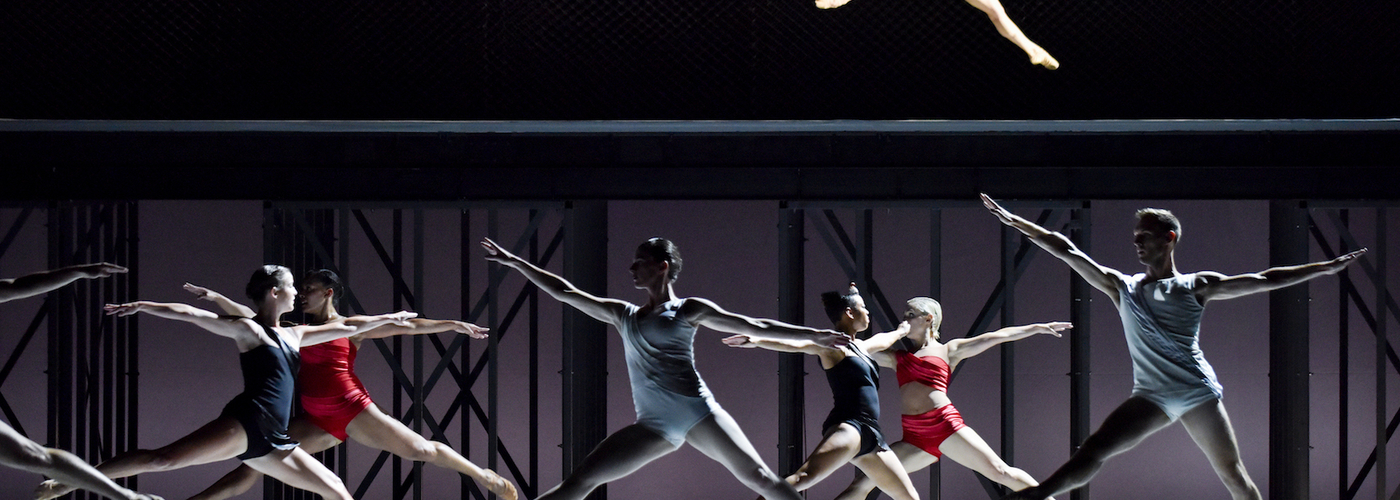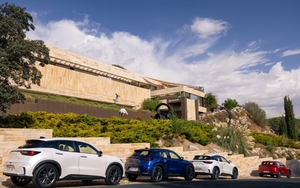This is an astonishing piece with probably the mostly perfectly synchronous dancers I’ve ever seen - Jonathan Payne
****
The combined age of the three creators adds up to 235 years, probably older than the entire company of the eleven dancers. This piece, Available Light, was first performed in 1983 in Los Angeles – with the natural lighting of that staging influencing the title. This production has appeared a couple of times this year, and has been ‘streamlined’ a little. The setting, by star architect Frank Gehry, is a split level asymmetric stage, the upper platform backed in a metal mesh. Underneath this platform there are a number of simple crossbeam supports, which also allow the dancers to appear in silhouette as John Adams’ taped music begins.
It is ‘early’ Adams, starting with a huge bass drone, and it presses me into my seat. The piece, continuous apart from one break after about forty minutes, is a fine fuzzy backing that matches the mesh, continually changing and shifting - synthesized harpsichord arpeggios, flickering phasing, with occasional abrupt lurches in tempo and volume, and what he calls ‘dirty brass’ adding depth and weight and colour. Although a lot of the music is quite slow, the dancers move continually. As Adams has mentioned, ‘It wasn’t until I was sitting and watching the rehearsals that I realized how hard it was for the dancers to find something to hold onto’, but hold on they do. There are four dressed in black, four in red, and three in white, the latter group starting off on the top deck. The costumes have a sash to them, three of them have exposed midriffs, four of the dancers are male, seven are female. The asymmetry of the four-four-three sets up an imbalance …
Lucinda Childs, the choreographer, who has worked with Philip Glass among many others, has created a sensationally affecting piece. The dancers are probably the mostly perfectly synchronous I’ve ever seen – whether dancing on the different levels, or in different groupings, they seemed to be utterly coordinated, seamlessly congruous. All chassés, plies, tick-tocking ciseaux, simple relevé are performed perfectly. They never touch each other, rarely (if ever) move from either back and forward, or in diagonals, and continually come to rest, standing quietly, whilst gulping great lungfuls of air. Childs has mentioned a mathematical, or geometric basis for the dance, and there is an immense pleasure to be had in watching the repeated patterns, repeated but altered leaps, shifting moves, and the sheer élan and poise of the performers. It is an astonishing piece.
Available Light, Palace Theatre, 6-8 July















